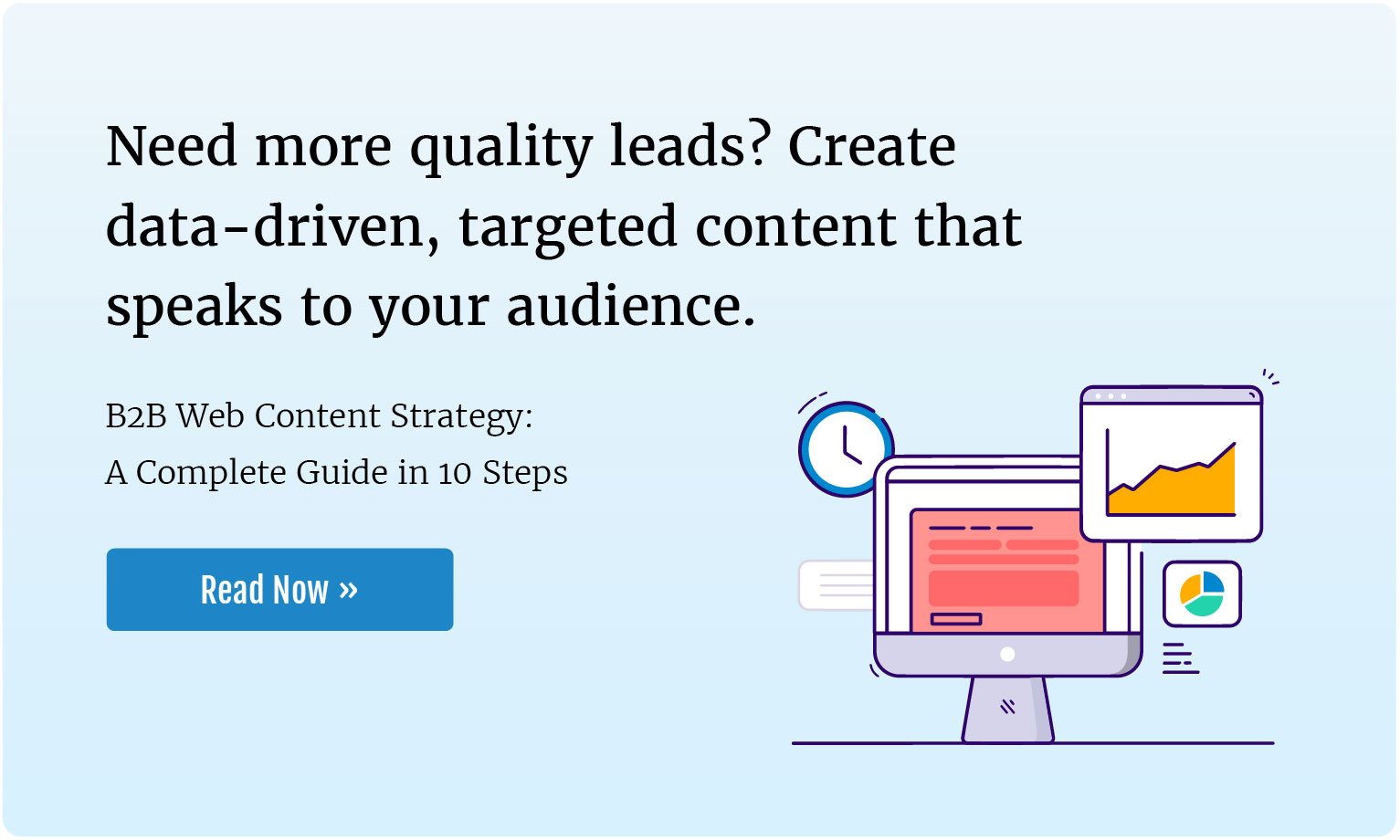Are you in charge of blogging for your business? If so, I have good news and bad news.
Here's the good news: you're working for a company that's embracing a marketing strategy built for the 21st century. Blogging takes advantage of the fact that so many potential buyers use search engines. In August 2021, for example, people conducted 5.7 million Google searches worldwide in a single minute.
Even back in 2015, “89% of B2B researchers use[d] the internet during the B2B research process” (Google). How many more might be researching online now?
And the bad news? Blogging can be a lot of work. While creating content can be relatively inexpensive compared to channels like paid search advertising, it does take time. And when you're doing it right, a lot of it.
So, how do you do it right? I could write pages and pages of blogging DOs and DON'Ts, but if your post meets these five criteria, you're on the right track.
1. Your post is helpful, not promotional
A blog post is not an ad.
Unless you're blogging for an investor community, or some other audience that actually wants to be sold on how great your business is, you're better off trying to help solve their problems than self-aggrandizing.
Why? As the Content Marketing Institute observes, the goal of content marketing is to get the attention of potential customers and get them to "grow to trust and rely on your guidance, recognize your company’s unique value proposition, and reward you with their business, loyalty, or evangelism."
The best way to achieve this is to listen to their problems and offer content that helps them solve them.
2. Your post is easily skimmable
Be honest. Have you read every word in this blog post? I didn't think so.
It's no secret that readers like to skim. So including bullet points, large headings, videos, and images lets readers pick out important bits from your blog post. Shorter sentences and paragraphs help, too.
Do your readers a favor and make your blog post easy to digest.
3. Your post includes data that backs up your points
It's common knowledge that customers have an inherent distrust of businesses that are trying to sell something to them. So it stands to reason that including data or facts from a reputable source can help earn their trust.
You can take this a step further by including the most interesting data in your blog post's headline. Even though most people won't read every word of your blog post, almost all of them will see the headline.
4. Your post contains images and/or video content
If you've ever seen someone share a link to an article that doesn't include a photo on Facebook, you know the power images can have on getting your attention.
Including images in your posts can help reduce bounce rate and break up text. Illustrative images can also help support your point.
5. Your post includes a clear call-to-action
Maintaining a blog is a great way to get potential customers to your website and earn their trust. But on its own, a blog can't generate leads and sales for your business.
Blogging is just one part of what should be an integrated inbound marketing campaign. Using a strong, relevant call-to-action reduces the possibility that you miss opportunities to convert readers into leads.
For example, in 2018, HubSpot found that personalized CTAs (set to automatically tailor themselves to a viewer based on information about them, like location) performed 202% better than "basic" (static) CTAs.
Conclusion
Blogging is great for your business, but only if it's done correctly. Make sure your blog posts:
- Help customers instead of advertise to them;
- Can be easily skimmed;
- Include supporting data;
- Make use of visual media like photos or videos; and
- Include CTAs to help convert more readers to leads.
Need help starting a successful content and blogging strategy for your business? Drop us a line or check out our free resources ↓
Topics: Strategic Blogging






